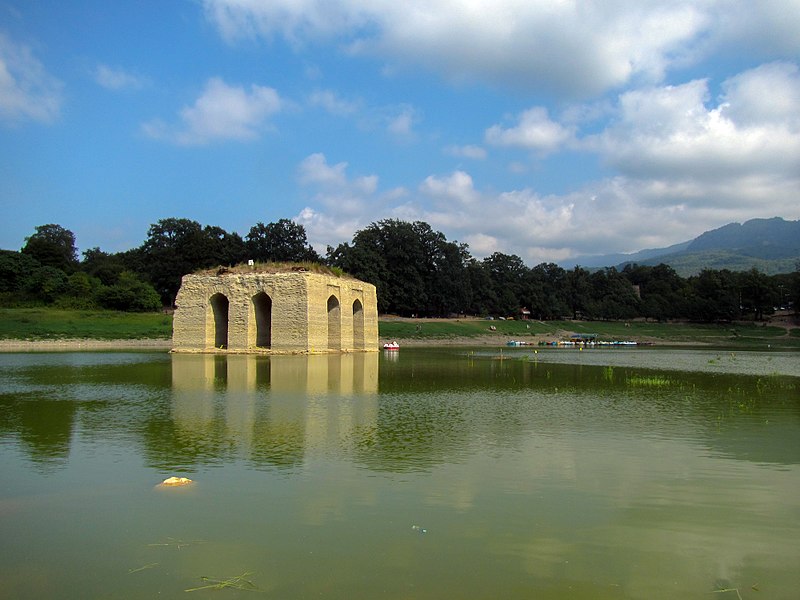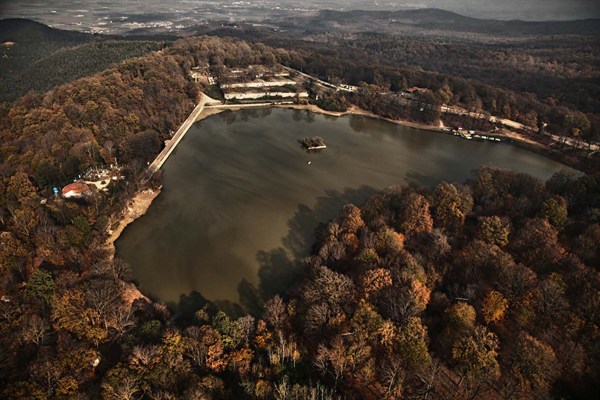



Abbas Abad Lake is a reservoir with a capacity of 600 thousand cubic meters and the dam wall is made of Saroj. This dam has been listed among Iran's historical and cultural monuments by the Cultural Heritage Organization with number 745. Abbas Abad natural lake with an area of more than 10 hectares with a mansion in its center, which goes under water with a height of more than 18 meters when the lake is flooded, and only its roof is visible with shrubs.
Abbas Abad lake with the sound of small and quiet waves, with the thick trees that are stretched around it and hidden in the forest, with the singing of birds and the remains of its historical building, is one of the most important nature tourism and tourism attractions of Behshahr city. . The nature of Mazandaran is extremely beautiful; And this small lake is no exception to this rule.
The reflection of a thousand and one colors in the water, watching the leaves that the wind separates from the trees and leaves them in the water, the image of the sky and the clouds that are always traveling, the coolness and freshness of the air, all of them are gathered together as a source of peace. become human Abbas Abad Lake is so beautiful that one can look at it for hours in silence, say nothing and enjoy being in nature in the truest sense of the word.
A trip to Abbas Abad Lake is a combination of nature tourism and historical-cultural tourism. Next to this 10-hectare lake is the 140-hectare Abbas Abad Garden, which is one of the nine Iranian gardens registered in the UNESCO World Heritage List and the most important non-desert garden in Iran. This historical complex was built by the order of Shah Abbas I Safavid between 1641 and 1642 and includes a lake, palace, flower garden, water mill, tower and bath, etc.
One of the characteristics of the registration of this collection in the list of world works is the unique mechanism created in relation to water circulation. It might be interesting for you to know that the Taj Mahal and the Alhamra Palace are examples of Iranian gardens that have been registered in the World Heritage List.
Almost in the middle of Abbas Abad Lake, there is a mansion that was connected to the northern side of the complex by a wooden bridge in the past, and according to some evidence, it was the foundation of a palace, of which there is no trace today. This brick mansion sinks completely under water during the high water seasons, so that the only sign of its presence are the trees that grow on the roof of the mansion. The water of the lake is supplied from the surrounding winter water, which is poured into the lake with the help of collection channels and used in the summer to irrigate the rice fields and supply water to the surrounding villages.
The size of Abbasabad Lake in Behshahr is more than 10 hectares, in the center of which there is an 18-meter-high mansion, which goes under water during the lake's water harvesting season, and sometimes only its roof comes out of the water. But in the seasons of low water, the whole building is out of the water and visible. But it is surprising that this building is still standing and stable after many years, even though it spends more than half of the year under water.
This building was built in the middle of the water with brick and mortar materials. It was originally a foundation for a palace that no longer exists, a palace that was once a place of rest and entertainment for Shah Abbas Safavid.
By the side of Abbas Abad lake in the 140-hectare large city of Abbas Abad, there are recreational facilities such as restaurants, teahouses, and prayer rooms, which make it easier to visit and stay at this lake. Historical complex of Abbas Abad Behshahr is located 9 kilometers southeast of Behshahr city, on the heights of Alborz, after the village of Ali Tepe (Altepe) and in the heart of dense forest. The way to access the mentioned complex is through the asphalt road that branches off from the main Behshahr-Gorgan road and leads to the mentioned area after passing through the village of El Tepe.